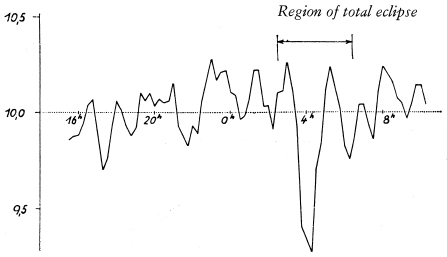
Water, Nature’s Sense Organ
The formative boundary surfaces in flowing movement prove to be areas of sensitivity. They respond to the slightest changes in their surroundings by expanding, contracting or making rhythmical waves. Water creates an infinite variety of these surfaces and is therefore not merely an inert mass, as we usually think. It is interwoven with countless sensitive membranes that are prepared to perceive everything taking place in the surroundings. Water is not enclosed within its inner surfaces but open to its surroundings and to all the stimuli and formative impulses from without. It is the impressionable medium par excellence. Indeed it is so sensitive that not only does it react to changes in its immediate surroundings, but also to the delicate, imponderable influences of the planetary universe. This may seem an exceedingly bold statement, but experiments in this field show that water is indeed capable of reacting to the delicate influences resulting from changes in the cosmos.
For instance, water shaken in a vessel can be caused to move in such a way that the inner surfaces thus created all slide past each other in the moving liquid. As soon as the movement ceases, the formation of inner surfaces, and thus also the great impressionability, is arrested, and the ‘sense organ’ closes itself. If water is shaken in this way, all the many forms of movement arise in it which we have been describing singly for the sake of clarity. The same is true of the natural movement of water, in which also a great variety of movements combine. Not only the shaking of a container but also other kinds of movement can open up the water as a sense organ. We will choose an experiment made on the day of a total eclipse of the sun, as this is a striking example among the abundance of constellations in the heavens.
During the course of the day at regular intervals—say every quarter of an hour—a different vessel filled with water is shaken rhythmically for a short time. Each time this is done a kind of sense organ, which closes again when the movement ceases, is opened to the momentary happenings in the heavens. And each time a somewhat different situation in the universe is imprinted upon the water: the gradual movement of the moon towards covering the sun, the commencement of such covering, the totality of the eclipse and the gradual movement of the moon away from the sun. At the end of a series of experiments like this the whole course of the happenings of the day is contained in the row of bottles that have been shaken. How can this be made visible? There are various methods, of which we have chosen the following: In the water of each vessel grains of wheat are caused to germinate; this can be done days or even weeks later, as long as the water has not meanwhile been disturbed anew. The grains of wheat are all placed in the water at the same time and under the same external conditions; the effect of the impressions which permeate the water will be seen in the growth of the blades. During the same span of time the blade in the water of one vessel will grow better than that in another. The lengths of the different blades in the different vessels will depict the course of the eclipse.

An eclipse of the sun is imprinted on moving water (graph of plant growth)
The blades in the water shaken at the time of the total eclipse do not grow as tall as those in water shaken before or after. A graph can be made of the lengths of the blades in the consecutive samples of water and the so-called growth curve results. Other planetary constellations will give growth curves of a different character.1
Apart from the method described above, experiments were also carried out using the method of capillary dynamolysis evolved by L. Kolisko. The results here too showed that the quality of the water changes according to the time (constellation) at which it is shaken. (Of course the impressions are lost as soon as the water is shaken anew, because it is then opened again to the cosmic influences of the moment.) What does this imply with regard to nature as a whole? A stream, bubbling merrily over the stones, forms countless inner surfaces and tiny vortices, which are all sense organs open to the cosmos, and which perceive the course of events in the heavens. Water passes on the ‘impressions’ it has received wherever it is absorbed by the earth and the plants, by the animals and man. In moving water the earthly world thus allows the ever changing life in the universe of the stars to flow into the course of its own life.
1 Mathematically interested readers may be assured that the result of the experiment satisfies strict statistical requirements. More information about these experiments may be found in the author’s book Grundlagen der Potenzforschung.